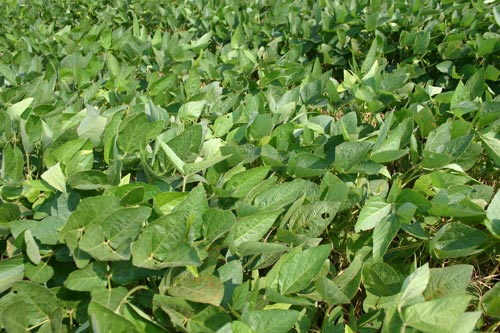July 12, 2011

Mid-South farmers plowing through 2011’s trying growing season will likely agree with Gus Wilson’s assessment: “We have two different crops: early and late.”
After an anxious spring where Arkansas, Louisiana, Mississippi, Missouri and Tennessee kept close watch on the swollen Mississippi, its levees and tributaries, Wilson -- Chicot County Extension staff chair for the University of Arkansas Division of Agriculture -- reported that producers are humming along thanks to some well-timed rain and sunshine. Wilson expected corn harvest could begin July 20-25.
And farmers in one of the hardest hit counties in Arkansas are making a comeback in a most trying growing season, said Ron Baker, Clay County Extension agent.
The Black River inundated Clay County this spring, nearly cutting off Corning and flooding hundreds of acres of farmland.
“It has been one of the most difficult years in recent memory for getting a crop in on the west side of Clay County, but persistence has paid off,” said Baker. “More than half of the soybeans are later than normal and almost everyone had to replant part of the crop at least once. Numerous fields were replanted two times.”
Timely rains have helped many fields tremendously over the last two weeks and most soybean fields are growing rapidly.
“So the bean crop is starting to shape up,” Baker said. “We have had to treat some fields for army worms but so far most of the crop is still well below treatment thresholds.”
The rice crop, “though smaller than usual, is finally starting to look like a good rice crop is supposed to look, so we are encouraged there.”
Baker is noticing more rice stinkbugs, left over from the winter wheat crop, earlier than he’s seen before. “That means we will have to really be on our toes when the rice starts heading this year or the heavy dockage we received in many fields last year due to stinkbug damage could be even worse this year.”
While the county’s corn crop was hardest hit by the weather, Baker said many fields are greatly improved over the last few weeks. “At this point, our crop looks encouraging -- except of course for the fields that did not get planted at all and will lay fallow until next planting season. Unfortunately, there are several of those around this year.”
The crop report issued July 5 found 88 percent of corn at silk stage, 28 percent at dough and 5 percent dent. Cotton was 83 percent squared and 12 percent setting bolls. Rice was 2 percent headed and sorghum was 43 percent headed. Soybeans were 99 percent planted, 93 percent emerged, 22 percent in bloom and 5 percent setting pods. The state’s winter wheat harvest was reported complete compared with 98 percent the previous week.
Among the 1 percent still planting soybeans were growers in Lonoke County, said Keith Perkins, Extension agent. “Producers are cleaning up rice and soybean fields and some are discovering that the pigweeds in their soybean field are glyphosate resistant and their pre-emerge herbicides did not get activated due to dry conditions after application. A lot of rice fields have received mid-season nitrogen applications and some sheath blight is beginning to show up.”
For more information on crop production, visit www.uaex.edu or contact your county Extension office.
You May Also Like




